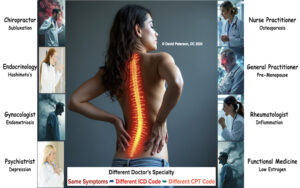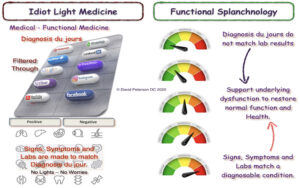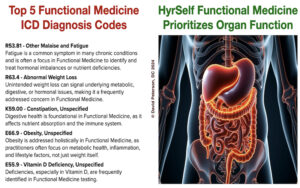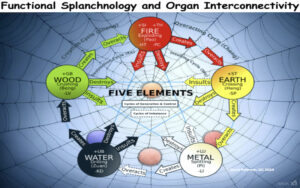At HyrSelf Functional Medicine, Dr. David Peterson uses the study of Splanchnology, or the science of internal organs, to understand and support health. Discover why Splanchnology, the study of internal organs and their interactions, is transforming Functional Medicine. Learn how understanding the Neuro-Endo-Immune Supersystem can unlock true healing by addressing root causes rather than just symptoms.
Splanchnology is the study of the visceral organs, i.e. digestive, urinary, reproductive and respiratory systems.1Bourgery JM. Traité complet de l’Anatomie de l’Homme. Paris: Delaunay; 1839. Vol. 5 Splanchnology; pp. 169–179.,2Gray H (1918) Gray’s anatomy. Anatomy of the human body. XI Splanchnology, 2H The Large Intestine 1918. The Bartleby project at http://www.bartleby.com/107/249.html,3Atlas of Human Anatomy. vols. 1-3. vol. 1, Osteology, Arthrology and Syndesmology, Myology (317 pp.); vol. 2, Splanchnology, Ductless Glands, Heart (229 pp.); and vol. 3, Nervous System, A ngiology, Sense Organs (326 pp.). Ferenc Kiss and Janos Szentágothai. Pergamon, London; Macmillan, New York, ed. 17, 1964. Illus.,4M.B. DeJarnette. Technic and Practice of Bloodless Surgery. 1939, p.51
But more broadly, Splanchnology includes all the components of the Neuro-Endo-Immune (NEI) Supersystem.5QJ Pittman. A Neuro-Endocrine-Immune Symphony J. Neuroendocrinology. Vol. 23, Issue 12, 1296–1297, Dec. 2011,6F Homo-Delarche, M Dardenne. The neuroendocrine-immune axis. Springer Semin Immunopathol Jan. 1993, Vol. 14, Issue 3, 221-238 Splanchnology focuses on the intricate network of organs and includes the Neuro-Endo-Immune Supersystem, which is central to how the body regulates itself.
An organ is a part of the human body made up of two or more different tissues, which plays a specific role in maintaining the body’s health and proper function. The vital activity of an organ occurs under the direct effect of the Neuro-Endo-Immune Supersystem.7QJ Pittman. A Neuro-Endocrine-Immune Symphony J. Neuroendocrinology. Vol. 23, Issue 12, 1296–1297, Dec. 2011,8F Homo-Delarche, M Dardenne. The neuroendocrine-immune axis. Springer Semin Immunopathol Jan. 1993, Vol. 14, Issue 3, 221-238
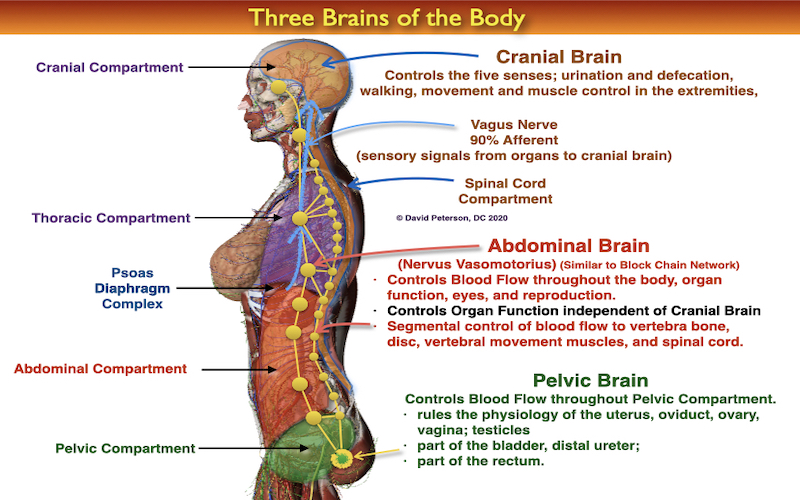
In this system, Neuro doesn’t refer to the brain and spinal cord as we might think. Instead, it centers around the Nervus Vasomotorus, often called the “Abdominal Brain.” This unique network controls blood flow and organ function independently of the brain, spinal cord, and even the vagus nerve. Every person is born with a fully functioning Nervus Vasomotorus, which means it operates without direction from the brain. In fact, the brain only takes control of certain functions like when a person pees or poops, which explains why young children wear diapers until these functions are fully developed and adults with dementia depend upon Depends.
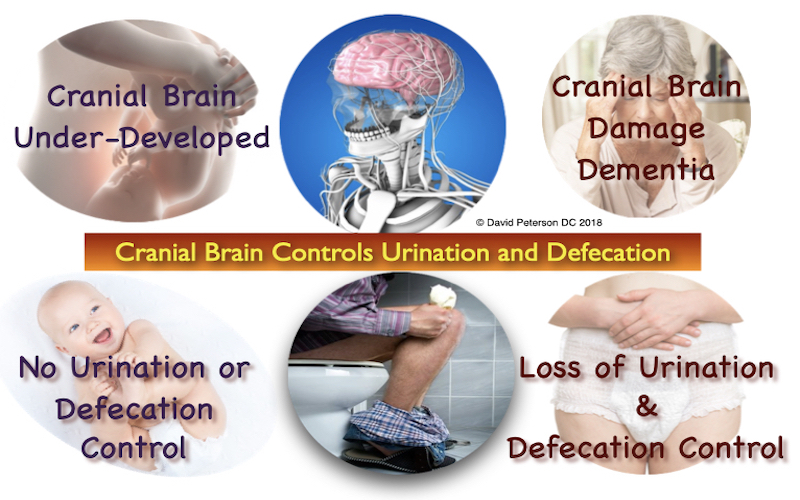
The Endo part of the Neuro-Endo-Immune Supersystem refers to hormones. These are chemical messengers that travel through the blood to signal various organs and cells. The Nervus Vasomotorus controls blood flow, ensuring that hormones reach the organs as needed for proper functioning.


The Immune part includes immune messengers like cytokines, chemokines, antibodies, and immune cells, which also move through the bloodstream. The Nervus Vasomotorus plays a crucial role here too, regulating blood flow so that these immune factors reach the organs when they’re needed to fight infections and heal tissues.
By controlling blood flow, the Nervus Vasomotorus directs blood filled with hormones, neurotransmitters, and immune factors to where they’re needed. This control of blood flow allows it to synchronize the functions of different organs, keeping the body balanced and healthy.
In Dr. Peterson’s work at HyrSelf Functional Medicine, Splanchnology and the Neuro-Endo-Immune Supersystem guide us in prioritizing the organs that need support. This way, we address root causes, not just symptoms, helping the body heal and thrive naturally.
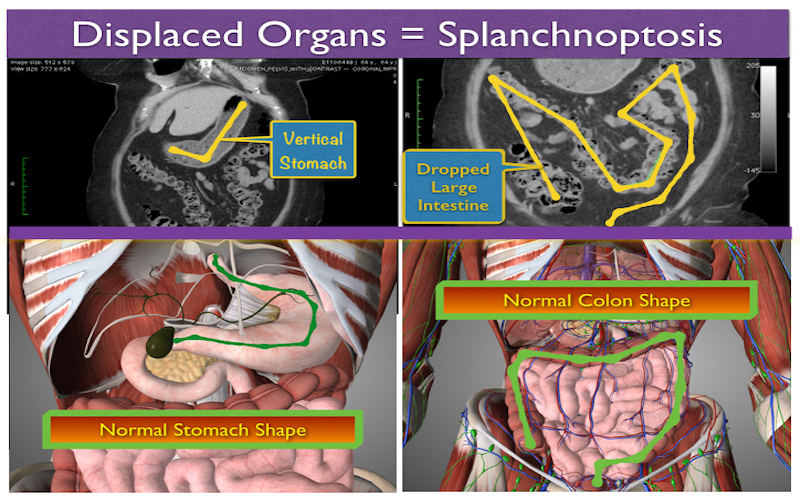
Splanchnology Explained: The Organ-Focused Approach to Restoring True Health
Splanchnology is the study of the internal organs of the body, focusing not just on their anatomy but on how they function together as a system. Here’s how it breaks down:

Neuro – Not referring to the central nervous system (brain and spinal cord) but to the Nervus Vasomotorus, often termed the “Abdominal Brain.” This network: Acts like a Blockchain Network: It’s decentralized, meaning it can operate independently from the brain, spinal cord, and even the vagus nerve. Every person is born with this system fully operational.
Controls Blood Flow and Organ Function: While your brain tells you when to pee or poop, the Nervus Vasomotorus handles the more nuanced, continuous operations of your organs by controlling blood flow.
Proof in Diapers: Consider this – infants and sometimes the elderly or those with certain disabilities wear diapers. This isn’t just because they can’t control their bladder or bowels; it’s because the brain’s control over these functions can be less developed or diminished, but the basic organ function still occurs due to the Nervus Vasomotorus.
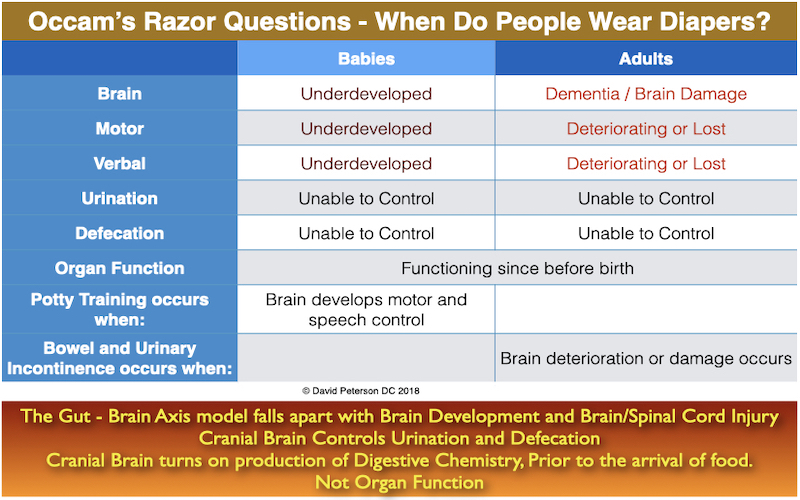
Endo – This part refers to the endocrine system, where: Hormones Travel through Blood: These chemical messengers are distributed throughout the body via the bloodstream, which is regulated by the Nervus Vasomotorus. This system ensures hormones reach where they need to go to maintain balance and function.
Immune – Here, we look at: Immune Messengers and Cells: Cytokines, chemokines, antibodies, and immune cells that travel through the blood. Their distribution and effectiveness are also influenced by how the Nervus Vasomotorus manages blood flow.
How the Nervus Vasomotorus Works:
Shunting Blood: The Nervus Vasomotorus essentially directs traffic within the body by shunting (diverting) blood. This blood carries:
Hormones and Neurotransmitters: Which are crucial for signaling:
Smooth Muscle Action: These chemicals help in the contraction and relaxation of smooth muscles found in your organs. This action is vital for processes like digestion, where food needs to move through the intestines, or in the bladder where urine retention or release is controlled.
Synchronization: By controlling the flow of blood, which contains all these vital components, the Nervus Vasomotorus ensures that organs work in harmony:
Example: When you eat, blood flow increases to the stomach and intestines to aid digestion; at the same time, less blood might flow to muscles not in use, optimizing the body’s energy use.
Why This Matters:
Health and Disease: Understanding how the Nervus Vasomotorus functions can explain many health phenomena. For instance, stress might cause this system to redirect blood flow away from digestion towards muscles, leading to digestive issues.
Hyrself Functional Medicine: By focusing on this system, treatments can aim at optimizing organ function at its core rather than just symptom management. It’s about fixing the ‘traffic system’ of your body to ensure all areas get what they need when they need it.
In essence, Splanchnology, through the lens of the Nervus Vasomotorus, provides insight into how our body’s internal operations are managed, offering a deeper understanding of health beyond just the brain’s commands. This perspective can lead to more holistic, systemic approaches to health care, focusing on the root causes of dysfunction rather than merely the symptoms.
Can Insurance-Based Functional Medicine Really Address Whole-Person Health?
Experience Organ Function Diagnosis at HyrSelf Functional Medicine
Is Your Pain Coming from an Organ? Understanding Viscerosomatic Referred Pain
Why Splanchnology is the Missing Key to Functional Medicine Success
The Truth About ‘Holistic’ Healthcare: How Insurance Codes Keep Doctors from True Healing
From Pain to Harmony: The Untold Story of Organ Health in Functional Splanchnology
References
- 1Bourgery JM. Traité complet de l’Anatomie de l’Homme. Paris: Delaunay; 1839. Vol. 5 Splanchnology; pp. 169–179.
- 2Gray H (1918) Gray’s anatomy. Anatomy of the human body. XI Splanchnology, 2H The Large Intestine 1918. The Bartleby project at http://www.bartleby.com/107/249.html
- 3Atlas of Human Anatomy. vols. 1-3. vol. 1, Osteology, Arthrology and Syndesmology, Myology (317 pp.); vol. 2, Splanchnology, Ductless Glands, Heart (229 pp.); and vol. 3, Nervous System, A ngiology, Sense Organs (326 pp.). Ferenc Kiss and Janos Szentágothai. Pergamon, London; Macmillan, New York, ed. 17, 1964. Illus.
- 4M.B. DeJarnette. Technic and Practice of Bloodless Surgery. 1939, p.51
- 5QJ Pittman. A Neuro-Endocrine-Immune Symphony J. Neuroendocrinology. Vol. 23, Issue 12, 1296–1297, Dec. 2011
- 6F Homo-Delarche, M Dardenne. The neuroendocrine-immune axis. Springer Semin Immunopathol Jan. 1993, Vol. 14, Issue 3, 221-238
- 7QJ Pittman. A Neuro-Endocrine-Immune Symphony J. Neuroendocrinology. Vol. 23, Issue 12, 1296–1297, Dec. 2011
- 8F Homo-Delarche, M Dardenne. The neuroendocrine-immune axis. Springer Semin Immunopathol Jan. 1993, Vol. 14, Issue 3, 221-238

